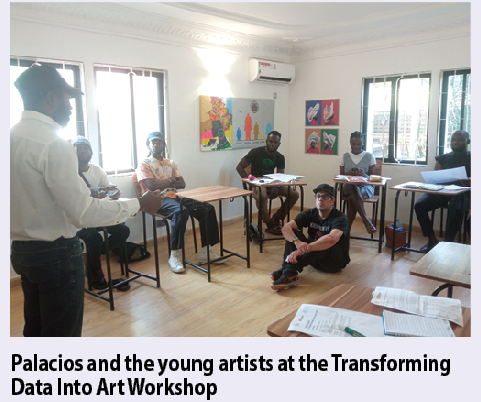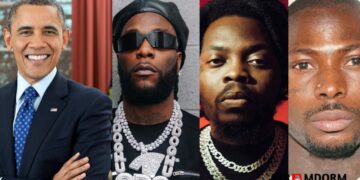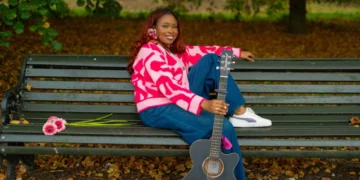At the opening of his exhibition Femicides/Art Report – a mesh of painting, photography and infographic artworks, Colombian artist David Palacios trained eight young Nigerian artists on how to transform data into art.
Prior to the exhibition, Palacios whose unique art style combines thirty years’ experience, knowledge and skills in an arts and graphics career, worked with local artists: painter, Obi Nwaegbe and, photographer, Tersoo Gundu, to breakdown global information statistics on femicides by the United Nations Office On Drugs and Crimes (UNODC) into colourful images that captures and draws in viewers, to the wealth of information it holds.
The artists worked in phases, Nwaegbe representing the report’s information in vibrantly colourful canvas, Gundu, presenting a photographic report of the painting – worn by female models as gele, while Palacios unites these two visual experiences in a Photo-Graphic report, containing the most relevant data from the report.
This exhibition is the second series of two art projects on feminine issues that is Palacios’ tribute to a popular Nigerian artist, J.D. Okhai. The first being Domestic Abuse featuring infographics and photographs of women in flamboyant African hairstyles.
The artist has also used his unique style to address issues of slavery in Latin America and Europe, among other topical global issues.
For him, choosing which data to transform into art, is about his personal grapples with society, and himself. It is about giving visibility to what often times when reported in the media is just numbers to the public. By blowing up the issue on canvas using attractive images, viewers are drawn into deeper inspection of the information they entail. “It is about using art to show all that information, another way to see that information.”
“In transforming data into art,” Palacios tells the young artists, “I work with colour tones. I find a report. if I am working on a report that deals with poverty, and I am looking at top ten countries, I go to Excel which gives me the percentages. I represent the percentages with quantities of colours using ten different containers, marked from 0 to 100. If Nigeria is among the statistics, with a 65 percent, I put the green colour in 65 percent. I use this quantity of colour to paint, no more, no less. It is the opposite of the literal and traditional depiction of poverty which shows images of poor and hungry people.
The overall image attracts the viewer, and when they come closer, they start looking at the graph to understand what the work is about.”
Furnishing the artists with a local report on Nigeria’s population education level, as impacted by their social class and economic earnings, Palacios had them interpret the data into art via their unique artistic skills.
Presentations delivered by the young artistes – ranged from motion photography, coloured and pencil drawings to a video game, and spanned ideas such as the use of dancers’ movements and costume to highlight educational and income status, and deploying water level and the lack of it to depict educational status.
Pleased with the presentations, which had started out slow, Palacios offered advise and tips on how the artists can improve on their presentations, whilst Gundu who later joined the event, said the workshop is an opportunity for the artists to embark on collaborative art projects, and a blueprint to developing a formidable arts collective.




